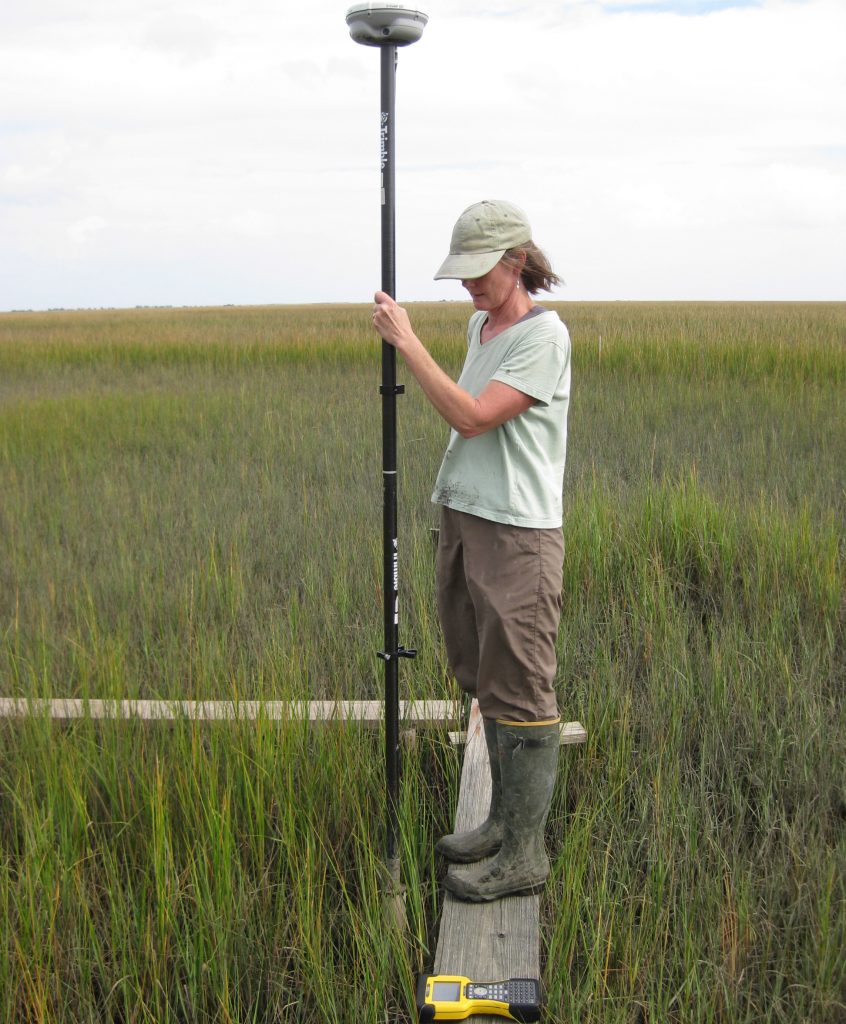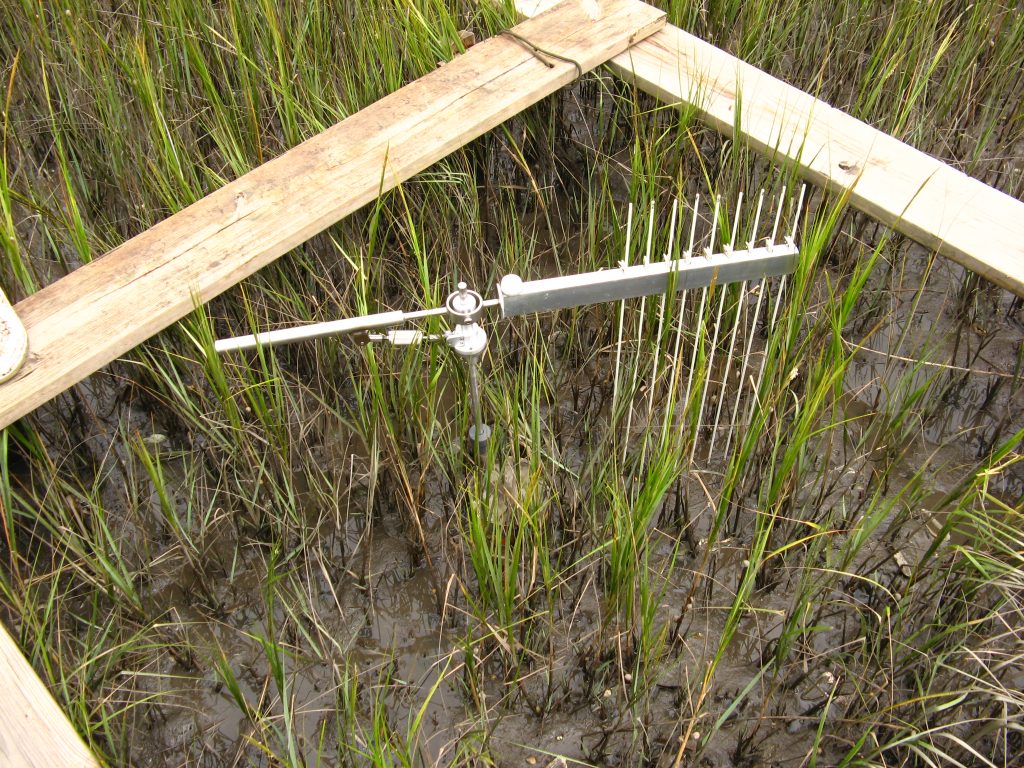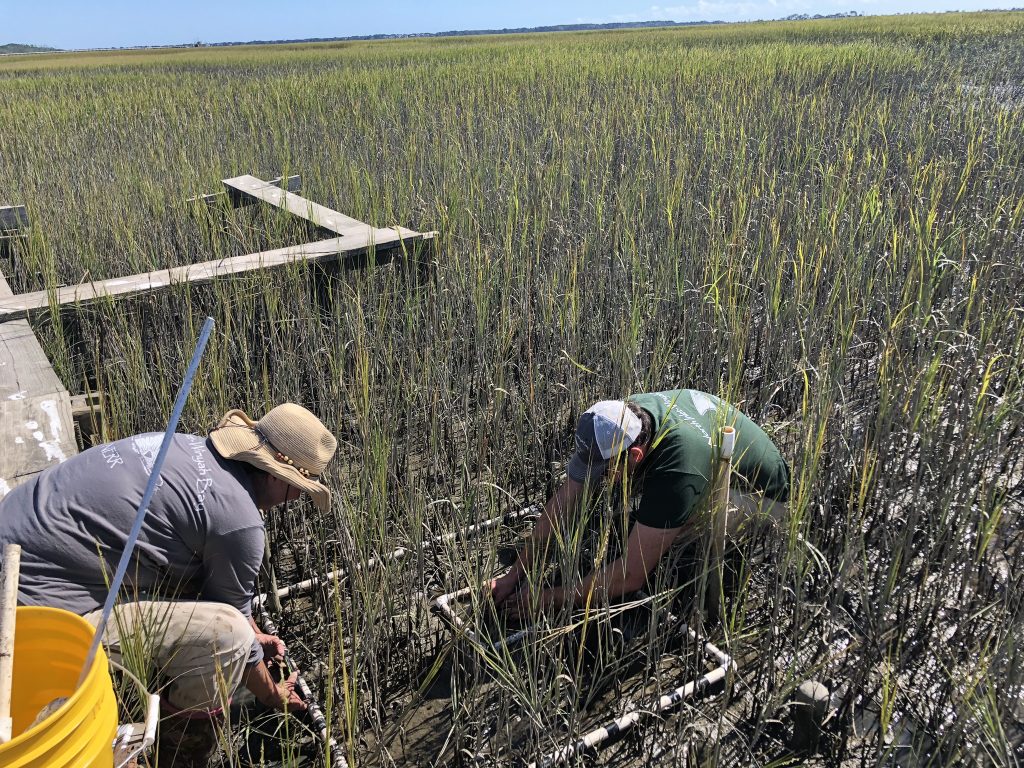Salt Marsh Response to Sea Level Rise
| Research Program
Previous studies have shown the growth of smooth cordgrass (Spartina alterniflora, now Sporobolus alterniflorus), the dominant emergent vegetation in North Inlet, to be affected by annual changes in tidal inundation and sea level rise. However, the effects of flooding and sea level rise on the long-term spatial dynamics of salt marsh plant communities, particularly the high marsh communities, remains less clear. This study is part of a broader NERRS system-wide effort to address those uncertainties.



To quantify responses of a southeastern US salt marsh to increasing tidal inundation, the reserve established a long-term monitoring effort in the Crabhaul Creek basin of the North Inlet estuary. This basin was selected because it lies at the landward edge of the estuary and previous research has shown that its marsh platform has been moving west, transgressing forest habitat on its upland edge. A total of 6 transects of 9-10 permanent plots each span the elevation gradient from creekbank to forest edge. Measurements at each plot include surface elevation and tidal inundation, sediment edaphic factors (% organic content, bulk density, grain size, and elemental analysis); porewater salinity, nutrient and sulfide concentrations, as well as non-destructive measures of plant community composition, stem density and canopy height. Surface Elevation Tables were installed in the upper and lower portions of each transect. The data collected will allow us to quantify how changes in marsh flooding over time affect the spatial structure of the marsh platform as well as the ability of marsh vegetation communities to migrate horizontally in response to increasing sea level rise.
In conjunction with the NERR marsh monitoring infrastructure, reserve partners at Clemson University’s Baruch Institute have established an eddy covariance tower system, which measures marsh-atmosphere CO2 exchange along with sensible heat flux, evapotranspiration, ancillary meteorological variables, soil temperature, and canopy phenology (greenness and NDVI). These measurements will allow us to quantify the role of the salt marsh in capturing atmospheric CO2, as well as how the integrated productivity of the marsh vegetation responds to changes in tidal flooding across a range of temporal scales (hours to years).
Sign Up for the latest news and events
Find out what’s going on at the Reserve with our monthly e-news letter.
Research Program Pages
Latest Research Program News

Storm Story: Hurricane Ian
Storm Stories use Data to Communicate Hurricane Impacts Storm Stories was developed through a NERR Science Collaborative Transfer Grant. The past several years of extreme


